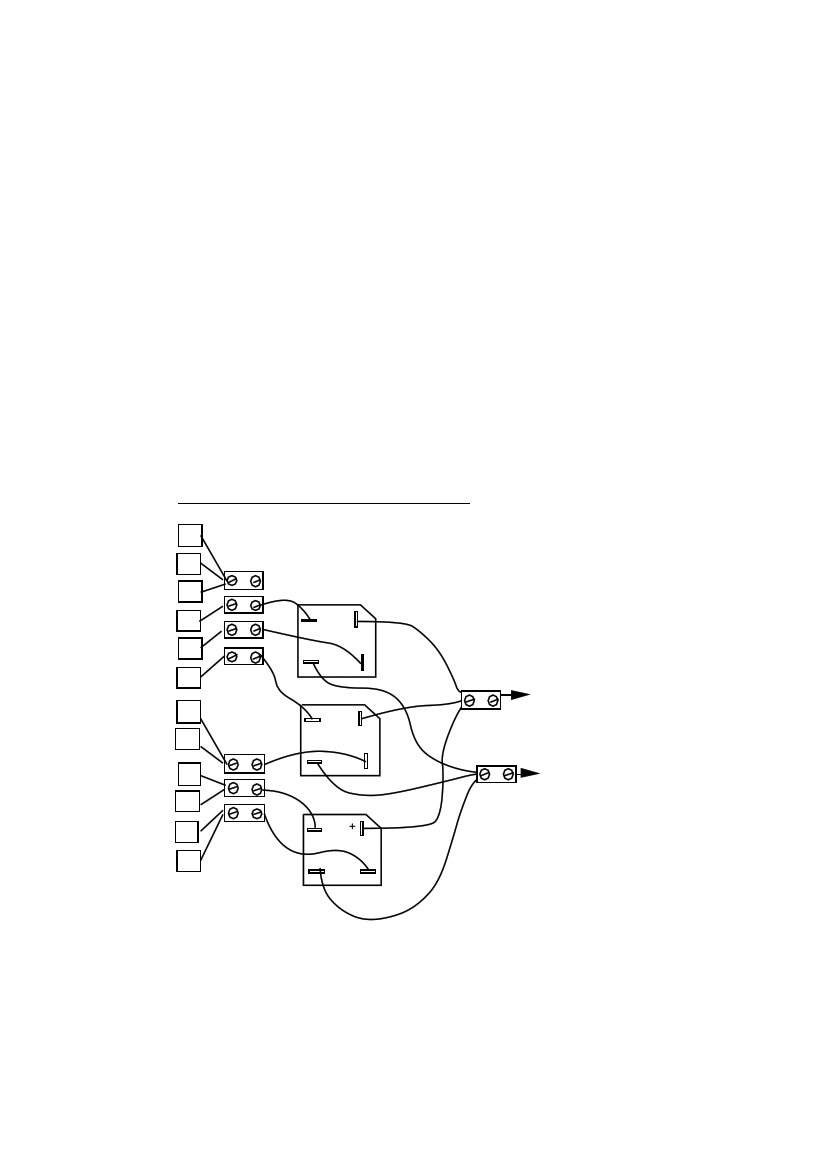
Yet another option for connecting the stator
At the time of writing this document, the above arrangement (using a relay to change
the connections) is still under development. Later, an electronic control circuit will
be available to automate the changeover. This is all very complex, and it so it can go
wrong.
If you do not wish to have to change the connections between low and high
windspeeds, then the PMG will still work. However, the efficiency will be slightly
less. Three are two options:-
• If you expect mainly low windspeeds, then you can simply use the star connection
shown in diagram 46.
• If you also need higher power in higher winds, you can use a 17AWG wire (1.2 mm
diameter) to wind coils with 200 turns each. Then you can connect one group in
delta and one group in star as shown in diagram 49. Note that you need six AC
terminals on the rectifiers so you will need three rectifier blocks.
49. STAR/DELTA CONNECTION
4A BLOCK
5A CONNECTOR
6A
4B
5B
6B
1A BLOCK
3B CONNECTOR
2A
1B
3A
2B
USE 200 TURNS PER COIL
+
BATTERY
+ POSITIVE
BATTERY
NEGATIVE
PMG-to-Battery Cable size
The cable from the PMG to the battery can be either three-phase-AC or DC. If the
rectifier is mounted at the wind generator, then it will be DC. This is only slightly
more efficient than three phase AC.
PMG manual
page 46
June 2001